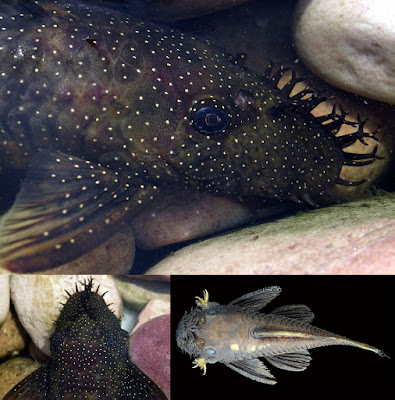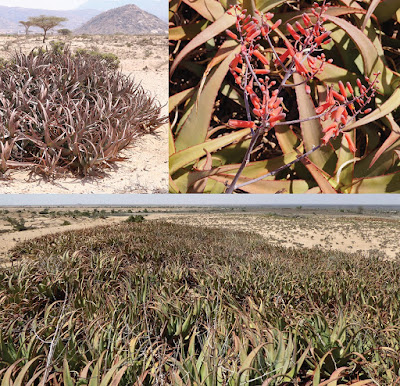[Most Recent Entries] [Calendar View]
Friday, February 8th, 2019
| Time | Event | ||||||||
| 2:10a | [Ichthyology • 2019] Review of Ancistrus (Siluriformes: Loricariidae) from the northwestern Guiana Shield, Orinoco Andes, and Adjacent Basins with Description of Six New Species
Abstract The Orinoco Andes and northwestern Guiana Shield (Essequibo, Orinoco, Branco, and upper Negro) were found to contain 11 species of Ancistrus, six of which are new. We additionally examine A. brevifilis from the Río Tuy of Venezuela and A. trinitatis from the island of Trinidad. The species in the region can be broken up into dorsoventrally flattened species (Ancistrus leoni new species, A. lithurgicus, and A. macropthalmus), white to yellow-dotted species (Ancistrus kellerae new species, A. nudiceps, and A. patronus new species), wide-jawed species (Ancistrus amaris new species and Ancistrus yutajae new species), and white-spotted species (A. brevifilis, A. leucostictus, A. trinitatis, A. saudades new species, and A. triradiatus). Distributions of Ancistrus support the Proto-Berbice hypothesis as A. saudades is found in the upper reaches of the Ventuari, Caura, and Caroni rivers, which were thought to have once flowed into the Proto-Berbice. In addition, although A. nudiceps does not appear to have split once the Takutu River was captured by the Branco, the progenitor of A. leucostictus and A. saudades did speciate with the populations on either side of the Rupununi Portal differing by 7% sequence divergence of the mitochondrial Cytochrome b gene. Besides the descriptions of the new species, we redescribe the others occurring in the area, and adjacent watersheds. We provide a key for their identification, and a preliminary hypothesis of relationships based on DNA sequences of the few species for which tissue samples are available. Keywords: Pisces, Ancistrini, Colombia, Guyana, Venezuela, Taxonomy
Lesley S De Souza, Donald C. Taphorn and Jonathan W. Armbruster. 2019. Review of Ancistrus (Siluriformes: Loricariidae) from the northwestern Guiana Shield, Orinoco Andes, and Adjacent Basins with Description of Six New Species. Zootaxa. 4552(1); 1-67. DOI: 10.11646/zootaxa.4552.1.1 Six new species of hideously adorable tentacle-nosed catfish discovered in Amazon phys.org/news/2019-02-species-hideously-a | ||||||||
| 2:00p | [Botany • 2019] Aloe sanguinalis (Asphodelaceae) • Dacar Cas/Somali Red Aloe: A New Species of Aloe from Somaliland
Abstract A new species of Aloe (Asphodelaceae) is described from Somaliland. It differs from other species in forming large clumps and in having sap that is initially yellow but quickly turns bright red and then dark red or reddish-brown, paniculate red-flowered inflorescences and uniformly coloured leaves with red teeth. Its recognition raises the number of species known from the combined area of Somaliland and Somalia s.s. from 31 to 36. A map portraying species density of Aloe by country, as that genus is now interpreted, shows that Aloe has its highest density on islands in the Indian Ocean but that, within Africa, the greatest density is in countries along the eastern highlands. The data also reinforce the importance of field botanists in determining a country’s known plant diversity. Keywords: Asparagales, species density, Africa
Aloe sanguinalis Awale & Barkworth, sp. nov. Type: SOMALILAND. Marodi Jeh (Maroodi Jeex), Hargeysa, Alala Adka, 15–20 km west of the town of Da’ar Buduk (Dacar Budhuq). Elevation 950 m, 9.8705N, 44.3761E (WGS84), 24 May 2017, Mary E. Barkworth S17.001, Ahmed Ibrahim Awale, Garrett Billings and Helen Pickering (holotype: HARG). Diagnosis: Aloe sanguinalis differs from other species of Aloe in its combination of sap that is initially yellow but quickly turns bright red, drying to dark red or brownish-red, strong clump-forming habit, red teeth and paniculate inflorescence of well-spaced glabrous, red flowers. ... Distribution: Aloe sanguinalis is currently known from only two locations, the type locality near Alala Adka and a more northern locality .... near the village of Lafarug. Larajasse (1897, p. 25), a Catholic missionary based in Berbera from 1888–1903, stated that “da’ar” refers to bile or an “aloe about three feet high, red and orange varieties, broad spiked fleshy leaves, spreading out from the ground; is a favorite food of elephants.” It seems probable, considering the species known from the area, that he was referring to A. sanguinalis. Elephants have not been seen in Somaliland since 1958. Habitat and ecology: The two known locations of Aloe sanguinalis are open plains with sandy soils in which, among other species, Salvadora persica and Indigofera sparteola grow. The Alala Adka location is treeless but there are scattered Vachellia tortilis trees at the Lafarug site. Etymology: The epithet is derived from sanguineus, Latin for blood, and refers to the colour of the sap which distinguishes it from all other species in the region. Mary E. Barkworth, Ahmed Ibrahim Awale and Faisal Jama Gelle. 2019. Dacar Cas/Somali Red Aloe: A New Species of Aloe (Asphodelaceae) from Somaliland. PhytoKeys. 117: 85-97. DOI: 10.3897/phytokeys.117.28226 |
| << Previous Day |
2019/02/08 [Calendar] |
Next Day >> |













